Orobanche cooperi, Desert Broomrape
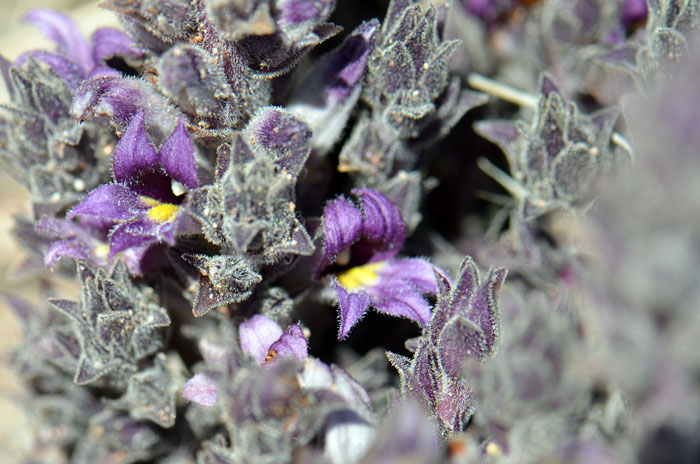
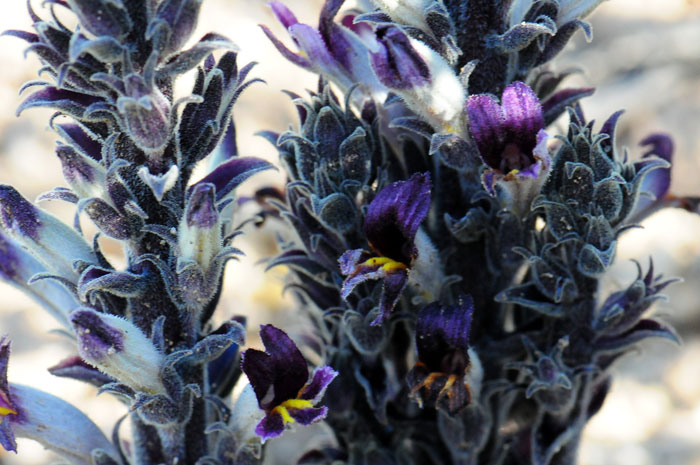
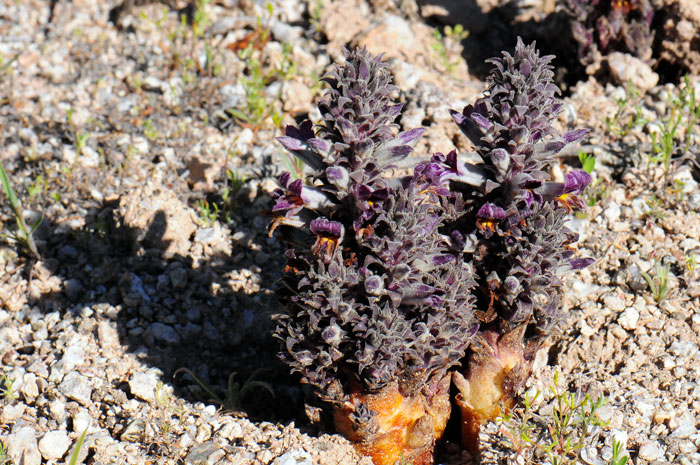
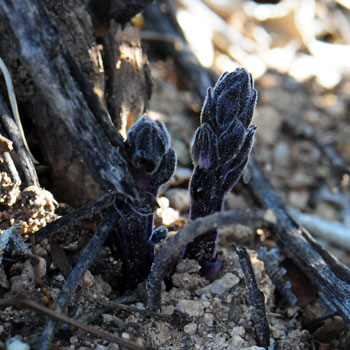
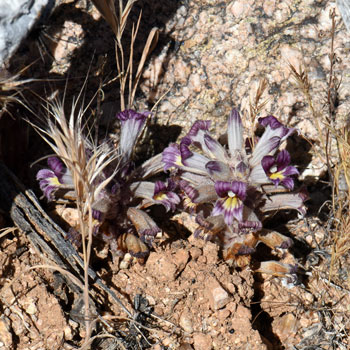
Scientific Name: Orobanche cooperi
Common Name: Desert Broomrape
Also Called: Cooper's Broomrape; (Spanish: Flor de Tierra)
Family: Orobanchaceae or Broomrape Family
Synonyms: (Aphyllon cooperi, Myzorrhiza cooperi, Orobanche cooperi subsp. cooperi, Orobanche cooperi subsp. latiloba, Orobanche ludoviciana var. cooperi, Orobanche ludoviciana var. latiloba)
Status: Native
Duration: Annual
Size: Up to 15 inches.
Growth Form: Forb/herb; plants often dark purplish aboveground, fleshy with several or individual dense spikes, bilaterally symmetrical.
Leaves: Alternate, reduced to scales.
Flower Color: Blue, dark blue, purplish; calyx nearly regular, corolla irregular, bilabiate, the tube narrow, stamen commonly in pairs, glandular hairy flowers, seeds many very small.
Flowering Season: February to September in Arizona; January to May in California.
Elevation: 200 to 7,000 feet in Arizona; below 1,500 feet in California.
Habitat Preferences: Sandy flats, desert soils and washes.
Recorded Range: Orobanche cooperi is found mostly in the southwestern United States in AZ, CA, NM, NV, TX and UT. In Arizona it is found throughout most of the state. Orobanche cooperi is also found in northwest Mexico and Baja California.
North America & US County Distribution Map for Orobanche cooperi.
U.S. Weed Information: Orobanche cooperi is listed on the USDA Federal Noxious Weed List and in USDA State noxious weed lists for 46 states. State agriculture or natural resource departments. Plants included here may become weedy or invasive.
Invasive/Noxious Weed Information: Orobanche cooperi is listed as a Noxious Weed by the federal government and by the states of; Alabama, California, Florida, Massachusetts, Minnesota, North Carolina, Oregon, South Carolina and Vermont. Plants included here are invasive or noxious.
Wetland Indicator: No information available.
Threatened/Endangered Information: No information available.
Genus Information: 20 species in Orobanche; 5 species in Arizona, 12 species in California, 7 species in New Mexico and Texas.
The Plant List includes 808 scientific plant names of species rank for the genus Orobanche. Of these 119 are accepted species names.
Comments: Orobanche species are root parasites. Apparently this species is a serious parasite on tomato crops in southeastern California (Coachella Valley). This species often attacks members of the Asteraceae family including the following genera; Ambrosia, Hymenoclea and Encelia. Specimens collected near Flagstaff, Arizona showed attachment to roots of Opuntia and Echino-cactus.
Desert Broomrape is used by the Pima and Cahuilla for food (roots and stalk below the ground eaten raw or roasted). See ethno-botanical uses at Native American Ethnobotany, University of Michigan, Dearborn.

